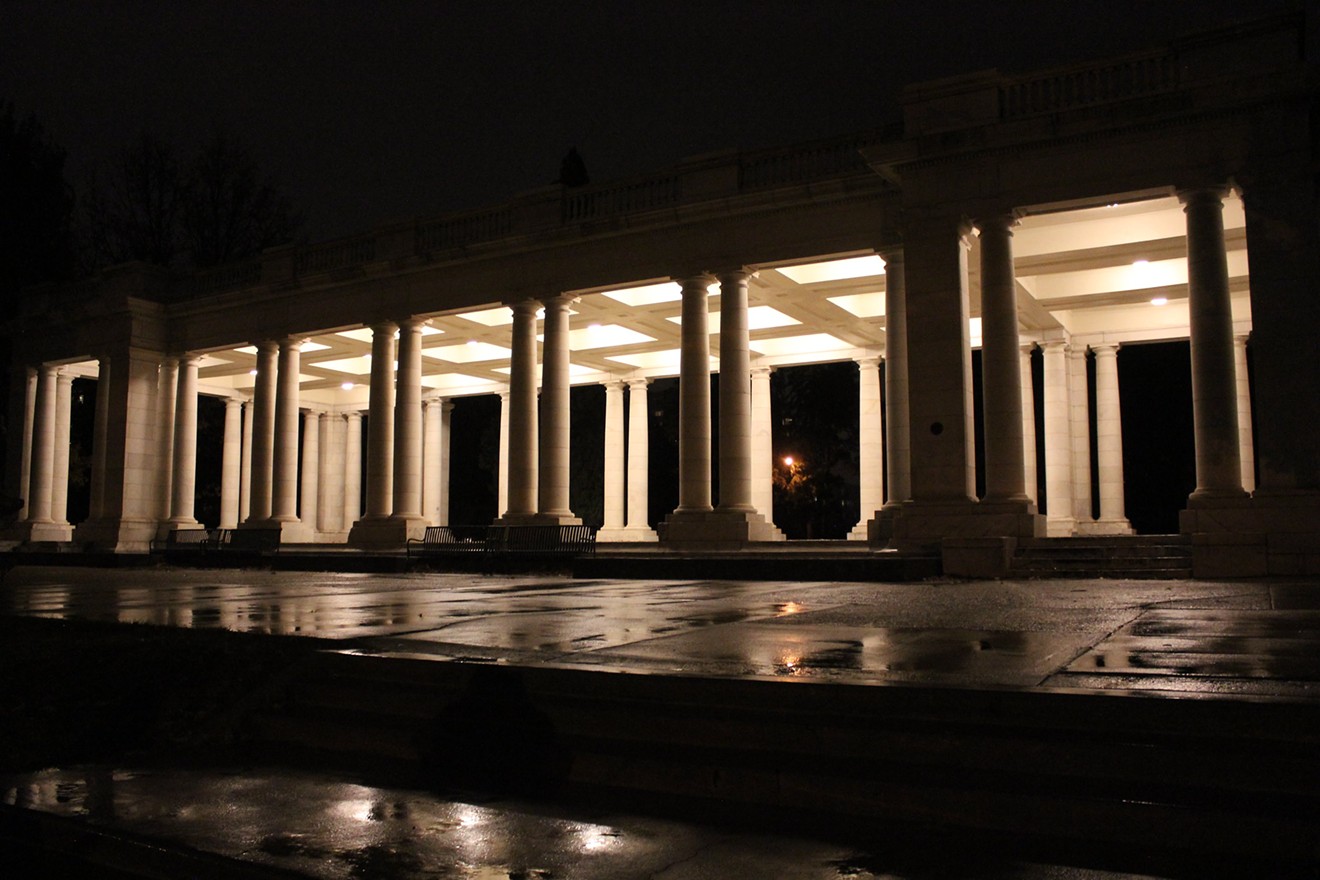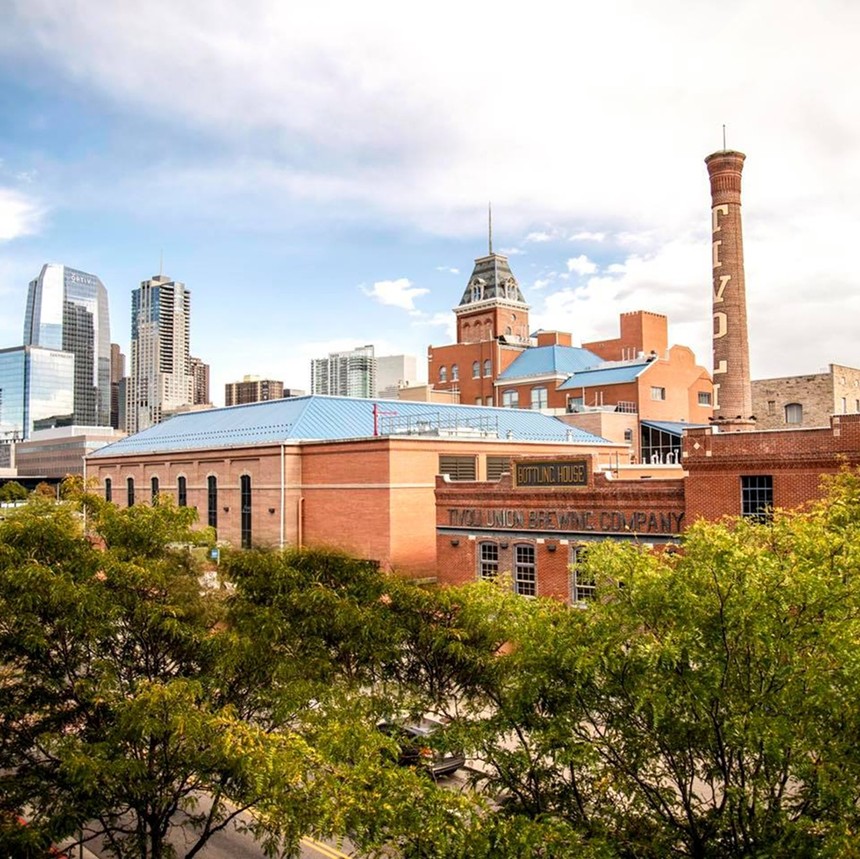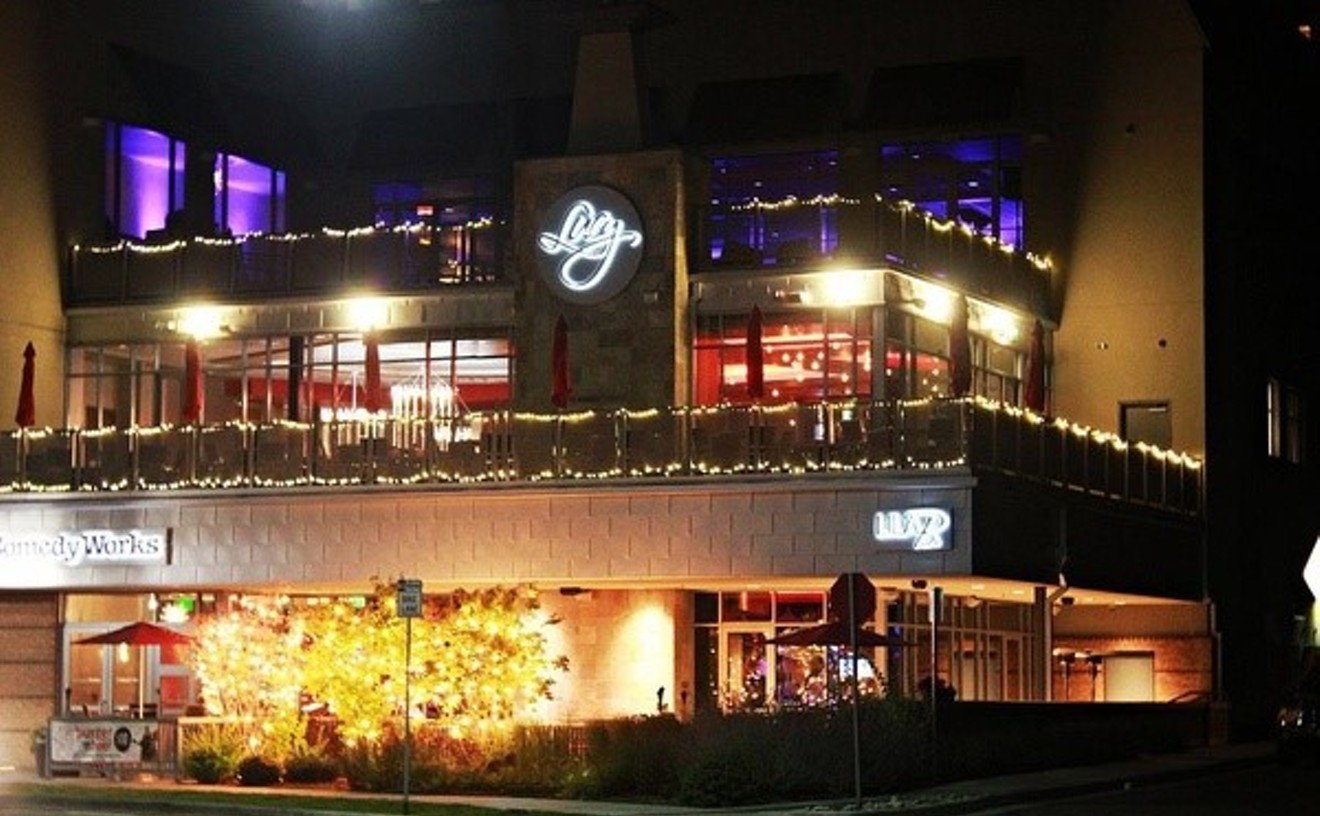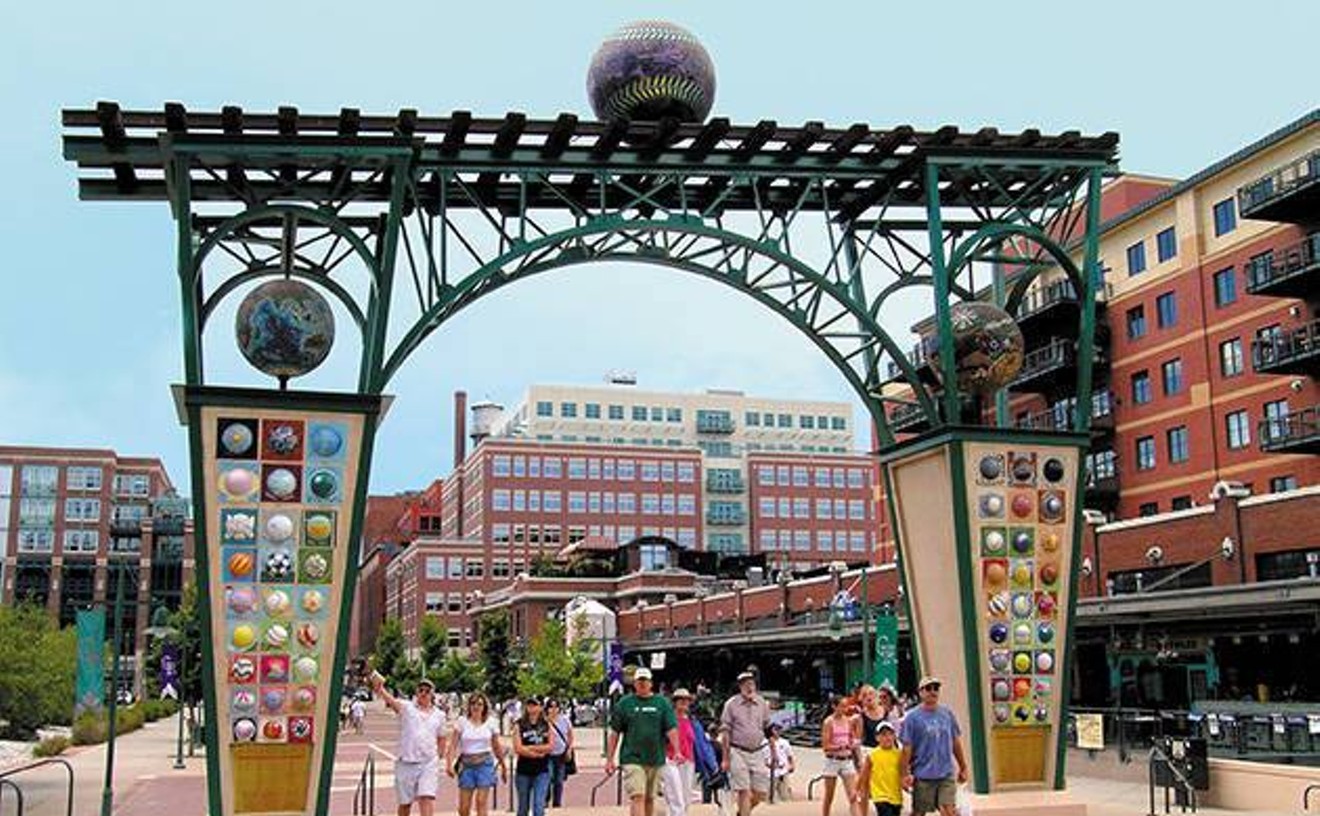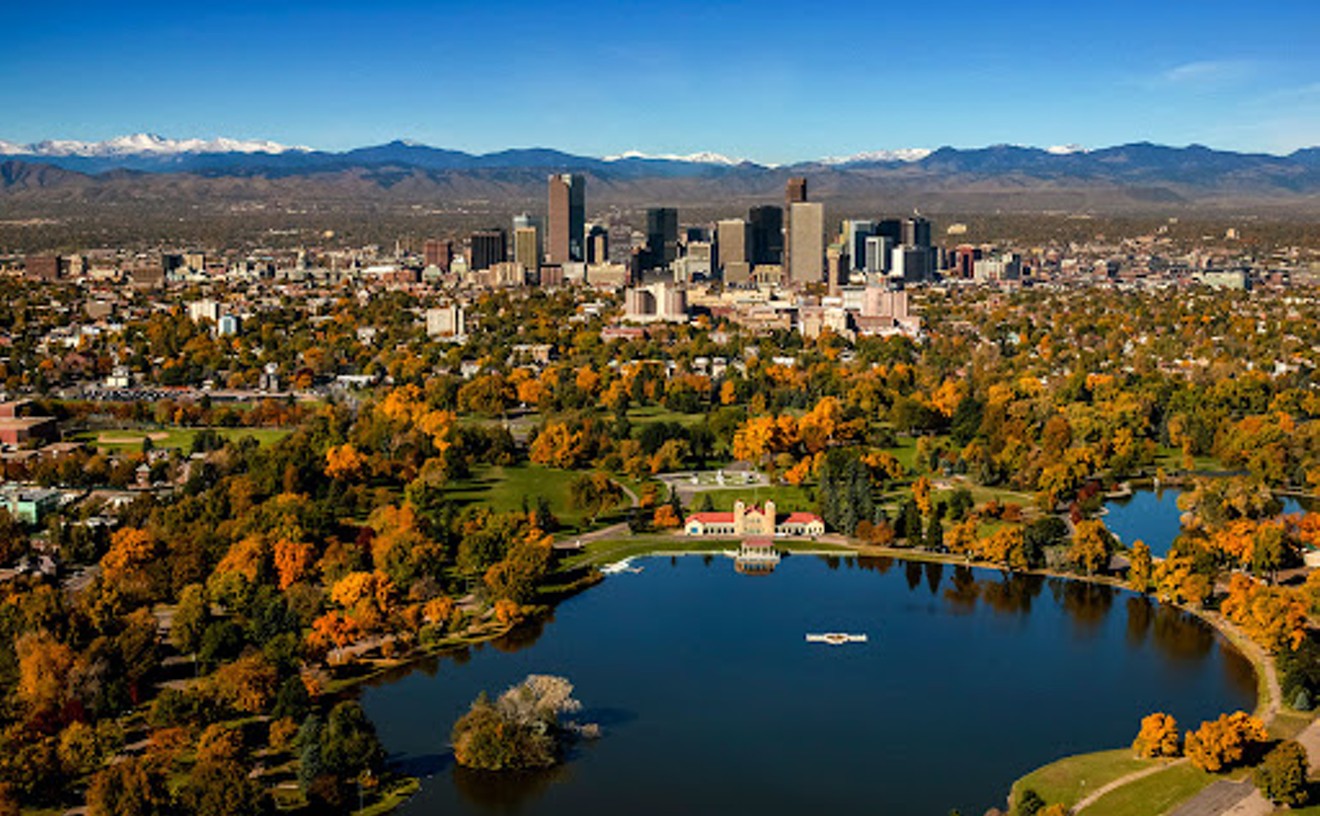The Mile High City may enjoy 300 days of sunshine a year (or then again, it may not). But Denver has its fair share of darkness, too. As autumn descends, it brings reminders of the ghost stories that resonate through the city, and all of the places with gloomy personality — or maybe personalities.
Here are thirteen of our favorite haunts around town:
Auraria Campus
900 Auraria Parkway
The tri-institutional campus is over 150 acres, and not all of them are haunted — but the ghosts of hundreds of onetime residents displaced by urban renewal can cover a lot of ground. As its student union, Auraria boasts the original Tivoli Brewery, a neo-gothic monolith that looks like it should be part of the Bob and Doug McKenzie movie Strange Brew and hosts everything from spirited brewers who dozed off and fell to their untimely deaths to a strange figure who appears in the mirror of a tucked-away second-floor restroom. But Ninth Street Park, with its rows of houses that were once part of Denver's oldest neighborhood and were barely saved from the wrecking ball, is even more haunted. The strange happenings here range from doors opening and closing in empty rooms to a doll’s head, recovered during construction and put on display in one of the old homes, that turns when nobody’s looking. Maybe she’s looking for justice for the people pulled from their homes back in 1969?
Cheesman Park/Denver Botanic Gardens
1599 East Eighth Avenue/1007 York Street
These classic Denver sites share a ghost story that rose from the same Poltergeist-y mistake: When the Mount Prospect Cemetery proved to be in the way of Denver's expansion, city workers moved the headstones but (at least in some cases) left the bodies. At both spots, bones and other remains sometimes work their way up from the earthly depths — so much so that a forensic pathologist is kept on speed-dial. “It makes you think about some of the fertilizer at the Botanic Gardens,” says local ghost guy and historian Phil Goodstein. “Maybe that’s why they can grow such pretty flowers.”
Lumber Baron Inn
2555 West 37th Avenue
Now a bed-and-breakfast in Potter Highlands, the Lumber Baron Inn dates back to 1890, when lumber magnate John Mouat settled there with his family. While they might still be hanging around, making those sounds of footfalls on the stairs and in the upper halls, the busiest ghosts are generally thought to be the two girls murdered here in 1970, back when the place was a run-down tenement in a sometimes dangerous part of Denver. Not that they’re alone in the spirit world of the Lumber Baron: Other sightings include a maid, a former teacher, a woman in a flapper dress and an older gentleman smoking a pipe. Sounds like a nice group. Or a rollicking game of Clue.
Union Station
1701 Wynkoop Street
It makes sense that Denver’s Union Station would be crowded with spirits, much as it was crowded with travelers for so many years. There’s the unfortunate soul who fell asleep too near the tracks, probably with the aid of strong drink, and was killed by a train. That might be the “hobo” who used to haunt the place even back when it was still a busy train station — the three-fingered transparent nuisance that would appear on various platforms and knock on the ticket windows. And then there’s the military presence in the main hall, something that rarely manifests visually but that people regularly sense nonetheless. Perhaps most tragic is the well-dressed man who looks befuddled, wandering back and forth between one track and another, unsure of which train to take. We’ve all been that guy, even if we haven’t passed away at a train depot waiting for our ticket to get punched.
Peabody-Whitehead Mansion
1128 Grant Street
This grand old structure was a residence for many years before it became a now-defunct restaurant — but it seems to have been haunted from the start. According to denverterrors.com, original owner William Whitehead, fresh from his bloody work as a doctor in the Crimean War, used to talk about being tormented by the soldiers he’d “failed,” and claimed to see “their ghosts wherever [he] looked.” Today one of the ghosts is Whitehead himself — and he’s not alone. A girl named Ella roams the second floor. A man smoking sweet cherry tobacco lingers in the women’s restroom. A waitress said to have committed suicide in the basement is still down there. A woman who's been seen from the street peeking through the upstairs windows is supposedly the remnant of a woman who died there awaiting her fiancé. So strong is this structure's national reputation that the Travel Channel’s Ghost Adventures host Zak Bagans himself came out with his team and did an investigation, possibly contacting the spirit of a girl who was sexually assaulted, murdered and buried under the basement floor.
Grant-Humphreys Mansion
770 Pennsylvania Street
This Denver event center was built as a Beaux Arts mansion in 1902 and has gathered its share of ghosts since then. There are said to be at least five separate shades, some perhaps borrowed from the nearby Mount Prospect Cemetery debacle that brought about the Cheesman Park hauntings. But one is known by name: It’s Albert Humphreys himself, the second owner of the manse, who despite being a crack shot died of a gun accident on the grand third floor. Was it just an accident? Suicide? Murder? No one knows, and Humphreys isn’t talking…at least as far as we can tell.
Croke-Patterson Mansion
420 East 11th Avenue
This is another Denver mansion featured on the Travel Channel — on Jack Osbourne’s Portals to Hell, which might be overstating it just slightly, but whatever. Back in 2011, Westword enumerated the many stories the Croke-Patterson has collected over the years, but to recap: baby in the basement, guard dogs so freaked out that they jumped to their deaths from the upper floors to the sidewalk outside, a kindly ghost midwife, typewriters that type things all by themselves, doors that open, floors that creak, objects that move and an admonishing Irish caretaker in the carriage house. That’s naming only a few; it’s been a busy place. And it is again today, having recently opened as a boutique hotel serving Capitol Hill...and possibly the afterlife.
Hop Alley
20th Street, between Blake and Market streets
Besides a RiNo restaurant named for the site of a tragedy, the only other sign of the destruction of Hop Alley — Denver’s own burgeoning Chinatown back in the Reconstruction Era — is a single plaque at Blake and 20th streets. The riot happened on Halloween 1880, when an anti-Asian brand of racist rabble-rousing succeeded in provoking hundreds of Denver locals to assault residents and put property to the torch. Only one death was reported: An elderly man was hanged from a lamppost at 19th and Lawrence streets. But the race riot’s legacy suffuses the area to this day, and the residents of Hop Alley deserve to be remembered in a more fitting way.
Buckhorn Exchange
1000 Osage Street
The Buckhorn Exchange isn’t just a Denver institution where locals can impress (and gross out) visitors with some Rocky Mountain oysters, rattlesnake or fried alligator tail. The restaurant is also hugely historic, having hosted everyone from miners to silver barons to U.S. presidents and Hollywood celebs, and then snagging Denver’s first liquor license after the end of Prohibition. When you consider the decor of the Buckhorn, you might imagine that the place is haunted by the various animals whose stuffed heads adorn the walls, watching diners and perhaps thinking, “I really do look delicious.” But who’s responsible for those mysterious footsteps, or the silverware going missing and then reappearing, or the tables and chairs that move seemingly of their own volition? Could be an elk, could be Teddy Roosevelt.
The Brown Palace
321 17th Street
The Brown Palace is full of ghosts, from the baby who wails in the boiler room to resident musicians practicing their melodies in empty rooms to the grief-stricken socialite who lived in Room 904 for fifteen years and still called down to the operator even after she’d passed. Perhaps most famous is the gentleman often spotted near the Club entrance: He’s wearing what looks to be an old-world railroad uniform, and if approached, he’ll disappear into the wall right where the old Rock Island Railroad ticket office used to be, more than 100 years ago. All aboard!
The Oxford Hotel
1600 17th Street
Denver’s Oxford Hotel might be better known for its bar — the Cruise Room has been serving up some of the classiest drinks in town since Prohibition ended — but it’s got its fair share of ghost stories, too. There’s the woman who’s said to wander the halls after being murdered by her husband in one of the rooms. But according to denverterrors.com, the best tale actually comes from the Cruise Room. It’s said that sometime around Christmas, a guy in a postman’s uniform came in, took a seat at the bar, ordered a beer, sat there silently and drank it slowly. When the bartender turned around to ask if he wanted another, he was just in time to see the ghostly postman slowly fading…and taking the bottle with him.
Colorado State Capitol
200 East Colfax Avenue
That golden dome might serve as a beacon to the Queen City of the Plains, but it holds its share of shades, too. The scent of rose perfume. Cold spots deep in the steam tunnels. A woman who rises from the tiled floor of the Senate, said to be the wife of an unfaithful congressman who shot him and then herself right there in the chamber. But the best spirits have to be the headless outlaws who ride their spectral horses through the marbled halls. According to ourcommunitynow.com, back in 1863 the Espinosa brothers had become known for defending their land by killing anyone who set foot there — and often cutting off the heads of trespassers and mounting them on fence posts. In response, a $5,000 bounty was put on their heads — and collected in October of that same year. The heads of the Espinosa brothers were brought to then-Territorial Governor John Evans and stored in the treasurer’s office for years until they finally disappeared into the facility's incinerator. These days, unlucky visitors to the Capitol might hear the hoofbeats of their horses or witness their disembodied heads floating through the halls in search of their long-lost bodies — and probably their land, too.
Molly Brown House
1340 Pennsylvania Street
No haunted Denver list would be complete without including Margaret Brown. Long after her death, she became famous as the Unsinkable Molly Brown, an undaunted survivor of the Titanic disaster. But here in Denver, she’s best known for this place, the gorgeous Queen Anne-style home that J.J. Brown bought for his wife in 1894 from the original owners and was saved by Historic Denver fifty years ago. It’s J.J.’s spirit that’s most often sensed, since his pipe tobacco can still be sniffed in the air now and again. But he and Molly are both occasionally seen, too, and Molly herself has a tendency to rearrange the furniture, perhaps making the parlor just so for the visitors coming through every day to hear tales of the Titanic, see the grandeur of the Denver mining era, and catch the many shadows wandering through American history.
[
{
"name": "Air - MediumRectangle - Inline Content - Mobile Display Size",
"component": "12017618",
"insertPoint": "2",
"requiredCountToDisplay": "2"
},{
"name": "Editor Picks",
"component": "17242653",
"insertPoint": "4",
"requiredCountToDisplay": "1"
},{
"name": "Inline Links",
"component": "18838239",
"insertPoint": "8th",
"startingPoint": 8,
"requiredCountToDisplay": "7",
"maxInsertions": 25
},{
"name": "Air - MediumRectangle - Combo - Inline Content",
"component": "17261320",
"insertPoint": "8th",
"startingPoint": 8,
"requiredCountToDisplay": "7",
"maxInsertions": 25
},{
"name": "Inline Links",
"component": "18838239",
"insertPoint": "8th",
"startingPoint": 12,
"requiredCountToDisplay": "11",
"maxInsertions": 25
},{
"name": "Air - Leaderboard Tower - Combo - Inline Content",
"component": "17261321",
"insertPoint": "8th",
"startingPoint": 12,
"requiredCountToDisplay": "11",
"maxInsertions": 25
}
]

